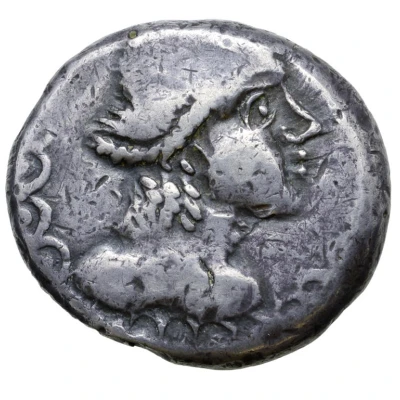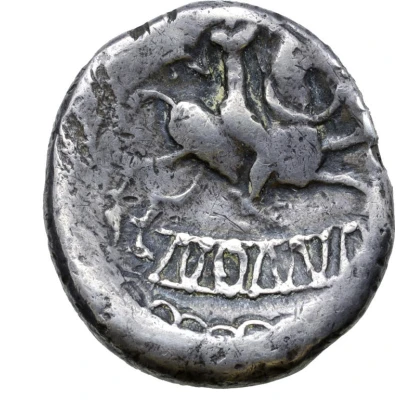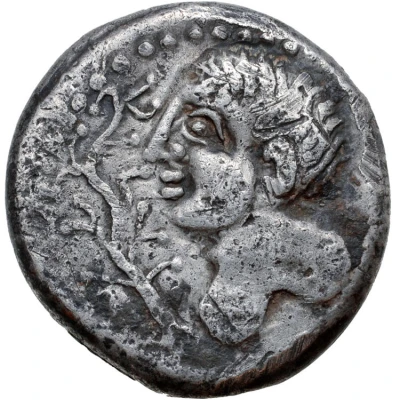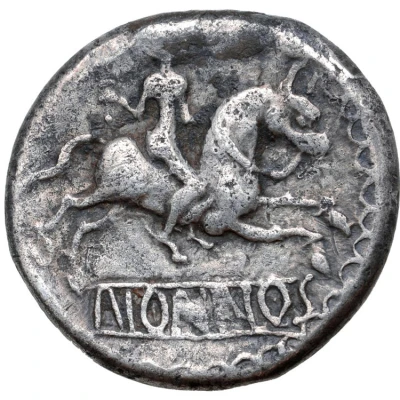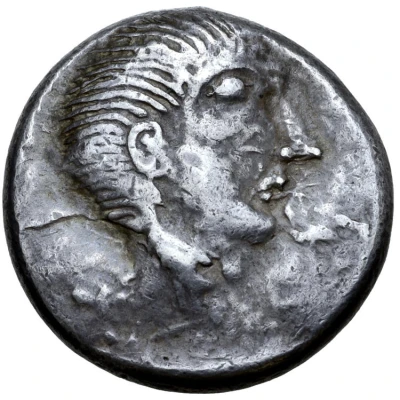
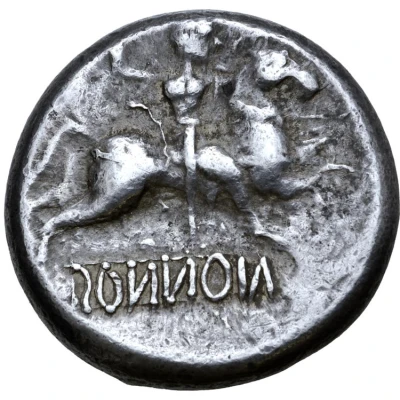

© Roma Numismatics Limited
Hexadrachm Nonnos Type 75 BC - 1 BC
| Silver | 17.21 g | 25 mm |
| Issuer | Boii |
|---|---|
| Type | Standard circulation coin |
| Years | 75 BC - 1 BC |
| Value | Hexadrachm (6) |
| Currency | Drachm |
| Composition | Silver |
| Weight | 17.21 g |
| Diameter | 25 mm |
| Shape | Round (irregular) |
| Technique | Hammered |
| Demonetized | Yes |
| Updated | 2024-10-09 |
| Numista | N#189356 |
|---|---|
| Rarity index | 100% |
Reverse
Horseman, holding sword in right hand and branch in left, riding to right; NONNOS retrograde between two lines below; all within linear-arch border.
Lettering: ƧOИИOИ
Comment
Paulsen pl. 32, 761-763; Göbl, Hexadrachmen pl. 6, XIV/2 (1) not 3;Recorded Sales:
• Roma Numismatics Ltd, Auction XVIII, 29 Sep 2019, lot 41. Sold for 850 GBP in VF grade, scratched.
Examples of this type:
• Example #1 (17.21g, 25mm, 5h; Very Fine):
© Image courtesy of Roma Numismatics Limited
◦ Ex-Hermann Lanz Collection; published in Kostial #82;
◦ Auctioned by Roma Numismatics Ltd, Auction XVIII, 29 September 2019, lot 40. Sold for 3,600 GBP.
• Example #2 (16.83g, 28mm, 5h; Very Fine scratched):
© Image courtesy of Roma Numismatics Limited
◦ Ex-Hermann Lanz Collection; published in Kostial #84;
◦ Auctioned by Roma Numismatics Ltd, Auction XVIII, 29 September 2019, lot 41. Sold for 850 GBP.
◦ Auctioned by Numismatik Lanz München, Auction 28, 7 May 1984, lot 32.
• Example #3 (16.90g, 25mm, 6h; Extremely Fine):
© Image courtesy of Roma Numismatics Limited
◦ Ex-Hermann Lanz Collection; published in Kostial #83;
◦ Exhibited by the Staatlichen Münzsammlung München at the 1997 International Numismatic Congress in Berlin; at the Berliner Bank also in 1997; also exhibited at the Luitpoldblock Palmengarten, Munich in 2003 (exhibition #30[reverse]);
◦ Auctioned by Roma Numismatics Ltd, Auction XVII, 28 March 2019, lot 41. Sold for 2,600 GBP.
◦ Auctioned by Numismatik Lanz München, Auction 48, 22 May 1989, lot 24.
Interesting fact
The Hexadrachm (Nonnos Type) coin from Boii was used as a form of currency in ancient Thrace, which is now modern-day Bulgaria, Greece, and Turkey. It's fascinating to think that this coin was used in everyday transactions over 2,000 years ago and has survived to this day as a piece of history.
